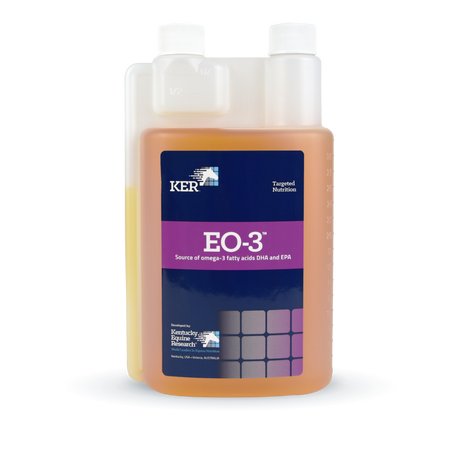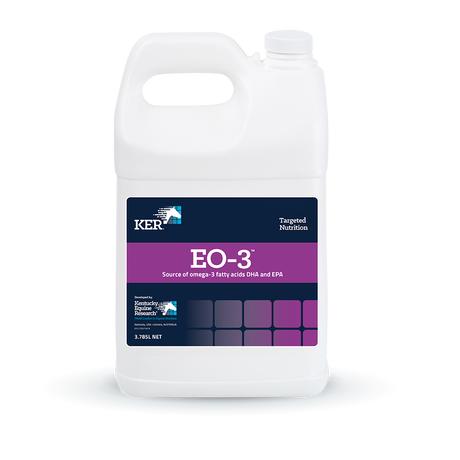
BLEEDING (EIPH)
BLEEDING (EIPH)
Exercise-induced pulmonary hemorrhage (EIPH or bleeding) occurs when capillaries in the lung rupture during intense athletic effort, resulting in the presence of blood in the airways. Very few horses demonstrate overt bleeding from the nostrils during an episode of EIPH. Instead, the bleeding is much more subtle, occurring completely internally. A definitive diagnosis is made through visualization of the lower airways by endoscopy and bronchoalveolar lavage.
EIPH occurs predominantly in racing breeds, but horses involved in other disciplines are often affected. Therefore, it is not unheard of for an eventing horse, especially one with a history of racing, to be diagnosed.
Most veterinarians rely upon pharmaceuticals for treatment and prevention of EIPH. However, researchers are investigating the promising connection between omega-3 fatty acids and EIPH prevention. Omega-3 fatty acids play a role in the flexibility of cell membranes. Flexibility of the red blood cell (RBC) membranes is crucial, especially during exercise, when heart rate increases, blood thickens, and packed cell volume rises. Increased elasticity of RBCs allows easier passage through narrow blood vessels in the lungs and muscles, thereby improving blood supply and oxygen delivery. Omega-3 fatty acids may also reduce inflammation in the lungs.
Improved elasticity of RBCs may reduce the incidence of EIPH. Hopeful results in human medicine have led researchers to explore the effects of a combined dose of docosahexaenoic acid (DHA) and eicosapentaenoic acid (EPA), two omega-3 fatty acids, to reduce signs of EIPH and pulmonary inflammation in horses. Scientists at
Fish oils (cold-water species) and flaxseed (linseed) oil are rich in omega-3 fatty acids. Fish oil is a direct source of EPA and DHA, whereas flaxseed contains alpha-linolenic acid, which must then be converted by the body to EPA and DHA. Though fish oils are typically not as palatable as vegetable oils to horses, new deodorization and flavoring technology has made some fish oils more palatable.
Which solution is right for your horse?
EO-3™ Omega-3 supplement. EO-3 is a rich source of omega-3 fatty acids DHA and EPA, compounds found to optimize the well-being of all horses, regardless of age or use. Specifically DHA and EPA supplementation has been linked to increased red blood cell membrane flexibility. Choose EO-3 to promote a more natural balance of omega-3 to omega-6 fatty acids in the body and the benefits this may confer on respiratory and immune health.
Race Recovery™ Racing optimized electrolyte. Race Recovery Paste and Powder are innovative electrolyte supplements designed specifically for horses given furosemide. Race Recovery provides targeted electrolyte supplementation, supporting a quick rebound from hard work.
- Equine Exercise Physiology: Red Blood Cell Flexibility
- Bleeding: How It Affects Race-Day Performance in Horses
- EIPH in Barrel-Racing Horses
- Administering Furosemide to Racehorses
- Effects of Furosemide on Performance and Mineral Excretion in Racehorses
- Furosemide Use in Racehorses: A Nutritional Perspective


